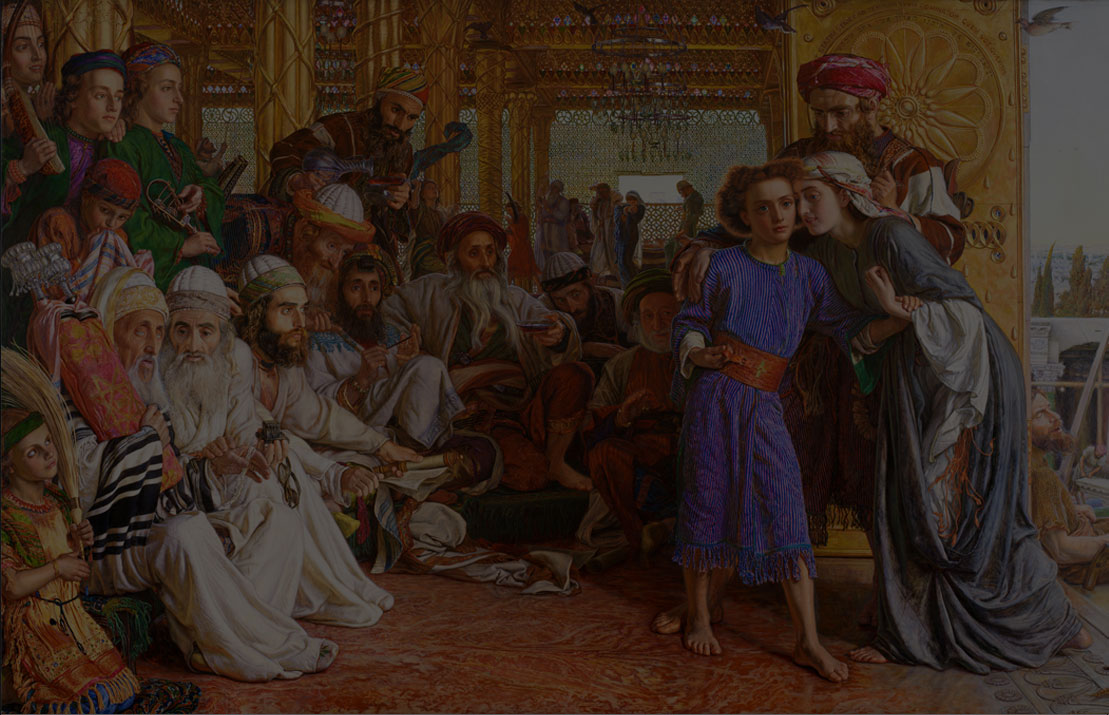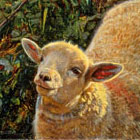Hunt left England for Cairo and Jerusalem in January 1854, following an admonishment by the writer Thomas Carlyle to create “a veritable contemporary representation of Jesus Christ.” In April he commenced the monumental Afterglow in Egypt at Giza, site of the pyramids and the Great Sphinx. It was the first time he had painted a human being as well as a landscape onto a canvas in the open air. Struck by the quality of light in the Middle East, he also executed a series of brilliant topographical watercolors. By June 1854, Hunt was immersing himself in biblical archaeology in Jerusalem, which intensified his faith and helped him to visualize the events of Christ’s life in more vivid detail. The two major oil paintings resulting from this first visit, The Finding of the Saviour in the Temple and The Scapegoat, are suffused with symbolism yet have archaeologically convincing settings.




